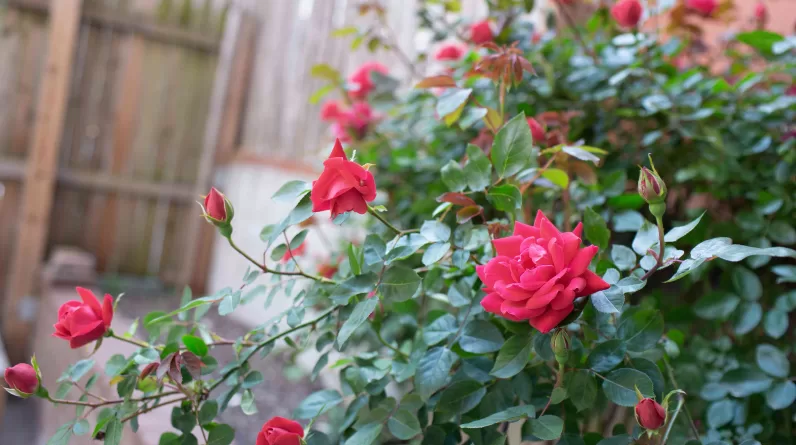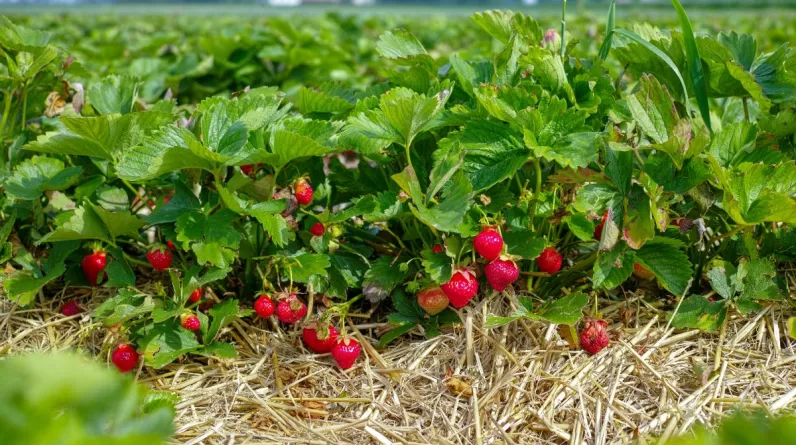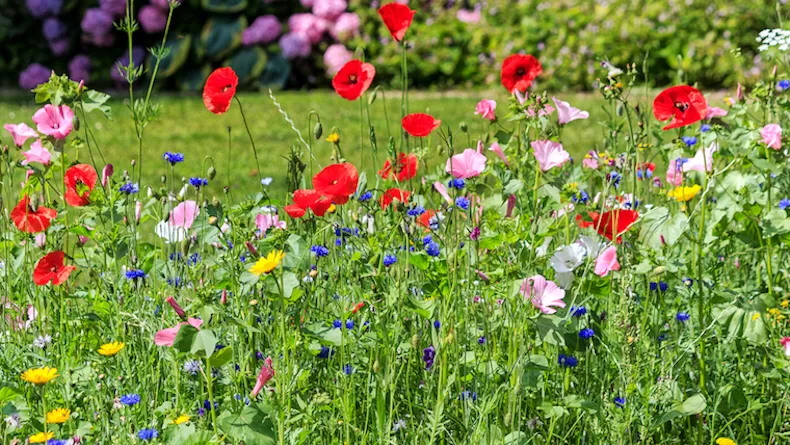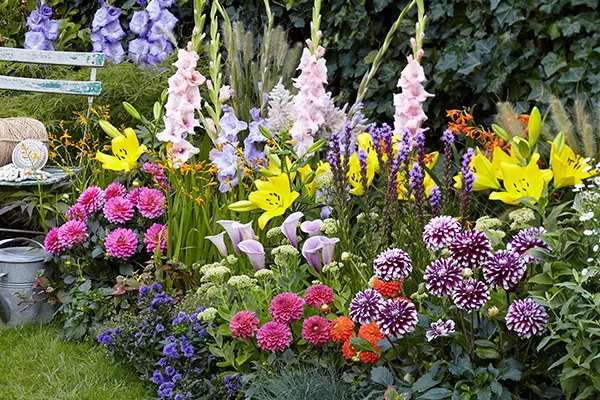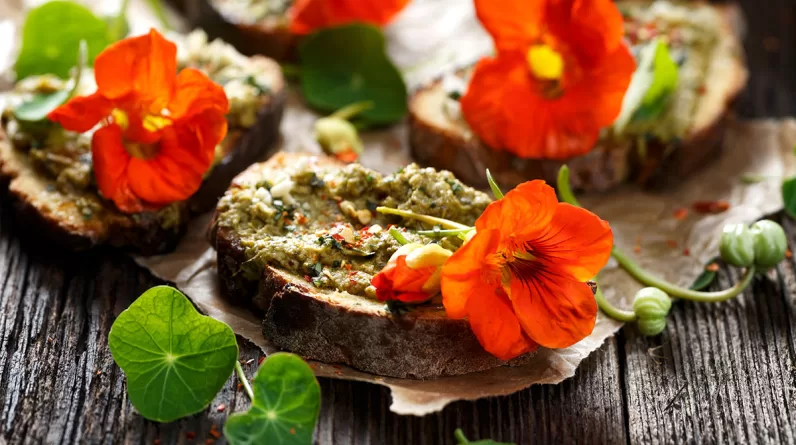Selecting Flowers That Thrive in Your Climate
Choosing flowers that will thrive in your climate is key to garden success. The last thing you want is to put in all that work only to watch your flowers struggle and fail.
Check Your Hardiness Zone
First, determine your area’s hardiness zone. This indicates which plants can survive your region’s temperatures. Zone maps are available online or at garden centers. Match the zone of plants to your zone for the best results.
Consider Sun Exposure
Next, evaluate how much sun your garden gets. At least 6 hours of direct sun per day is considered full sun, while 2-6 hours is partial sun, and less than 2 hours is shade. Choose flowers that match your garden’s sun exposure. Sun-loving blooms like petunias and marigolds need full sun, while shade flowers such as hostas and astilbes prefer shade.
account for Rainfall
The amount of rainfall in your region also affects which flowers will do well. Flowers from arid climates like portulaca and sedum will thrive in drier areas, while those needing consistent moisture such as begonias and impatiens prefer rainier spots.
By selecting flowers well-suited to your climate, you’ll create a garden that is both beautiful and low maintenance. Do your homework to find flowers that will thrive in the conditions nature has provided. Your efforts will be rewarded with a stunning, successful flower garden!
Arranging Flowers by Height, Color, and Bloom Time
Arranging your flowers by height, color, and bloom time will create a cohesive and pleasing flower garden design.
Height
Group flowers of similar heights together for the most natural look. Tall flowers like sunflowers, cosmos, and hollyhocks make excellent backdrops and focal points. Place medium-sized flowers like snapdragons, dahlias, and asters in the middle. Fill in the front with low-growing flowers such as petunias, pansies, and marigolds. This creates dimension and a sense of flow in the garden.
Color
Another trick is to arrange flowers with complementary or analogous colors next to each other. Complementary colors like red and green, or blue and orange, create high contrast. Analogous colors like reds, oranges, and yellows blend harmoniously. You can also choose a single bold color like hot pink and plant flowers in shades ranging from pale pink to deep fuchsia for a dramatic look. Include some white or light pastel flowers to soften the color scheme.
Bloom Time
Make sure you have something blooming in your garden from spring through fall by choosing flowers with different bloom periods. Early spring bulbs like tulips and daffodils start the show, followed by summer annuals such as petunias and zinnias. Asters, chrysanthemums, and sedums continue the color until frost. This staggered bloom approach means your garden will always look lively and photo-ready.
Using these design techniques, you’ll have a flower garden bursting with color and visual interest from every angle. Play around with different groupings and color schemes—the possibilities are endless! With some experimenting, you’ll find a look you love.
Incorporating Hardscapes and Focal Points
Adding hardscapes and focal points to your flower garden design will give it polish and purpose. Hardscapes like pathways, patios, and trellises provide structure, while focal points attract attention and tie the space together.
Pathways
Crisscrossing pathways through your garden lead visitors on a journey of discovery. Curving paths feel natural and intimate while straight paths exude formality. Use materials that complement your home’s style, such as brick, stone, gravel, or wood chips. Position pathways to maximize views of blooms and direct foot traffic, with wider paths allowing two people to stroll side by side.
Patios and Sitting Areas
A patio or sitting area invites visitors to linger amid the flowers. Nestle a patio into a private corner or place it centrally to appreciate the garden from all angles. Outfit the space with chairs, benches, tables, and perhaps a fire pit or water feature. Use plants, trellises, or garden walls as natural dividers to create separate “rooms” with different purposes.
Focal Points
Add focal points to give your garden a sense of destination and draw the eye. A specimen tree, water feature, sculpture, or large planter can serve as an anchor for the space. The key is to choose a focal point that matches your garden’s style and scale. A wrought-iron obelisk suits a cottage garden while a Zen fountain complements an Asian-inspired minimalist space.
Trellises and Garden Structures
Trellises, arbors, and pergolas introduce height while providing support for vining plants. A trellis may be a simple grid while an arbor incorporates an arched walkway. Pergolas are open-air structures with vertical posts and open latticework. Position structures at the end of a path or to frame an entryway. Use them solo or in combination, training vines and flowers over and around for a romantic, secret garden feel.
With thoughtful incorporation of hardscapes and focal points, your flower garden will blossom into an inviting space for both you and your visitors to enjoy. guide visitors through, linger in, and celebrate the simple beauty of nature.
Maintaining Your Flower Garden Throughout the Seasons
To keep your flower garden looking its best throughout the growing season, ongoing maintenance is key. Staying on top of a few tasks each season will reward you with a colorful, flourishing garden all summer long.
Spring
Once the threat of frost has passed, it’s time to prep your garden for spring planting. Turn over the soil to aerate it, pull any weeds, and add compost or other organic matter to enrich it
Plant spring-blooming bulbs like tulips and daffodils, annual flowers such as petunias and marigolds, and perennials like coneflowers and asters. Water thoroughly after planting and add a layer of mulch around plants and over the soil to help retain moisture in the soil.
Fertilize plants once new growth starts to emerge. Prune back perennials and shrubs as needed. Inspect plants regularly for common pests and treat them if found.
Summer
During hot summer months, watering and weeding become top priorities. Most flowers will need at least an inch of water each week. Weed flower beds regularly to avoid competition for resources.
Fertilize plants again in early summer to encourage flowering. Watch for common summer pests like aphids, spider mites, and leafhoppers and treat if populations get too large. Prune shrubs after flowering to maintain shape and size.
Fall
In fall, let annual flowers and perennials go to seed if you want to collect them or leave them as food for birds. After the first frost, clear the garden of dead or dying plants. Add another layer of compost or mulch to flower beds.
Plant spring-blooming bulbs in the fall for flowers next year. Divide overcrowded perennials and bulbs and replant. Bring tender perennials, shrubs, or bulbs indoors if your area experiences harsh winters. Prune shrubs and trees.
A well-designed maintenance schedule will ensure your garden is always in full bloom. Paying close attention to the seasonal care of your flowers and making minor changes as needed is the key to success. Your efforts will be rewarded with a vibrant, thriving garden for years to come.


